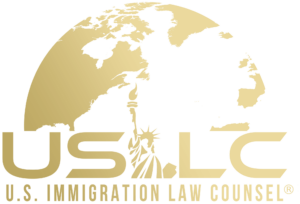At US-ILC, we listen, we care, we deliver: Let our 89 years of combined experience help you to navigate the complexities of immigration law!
Each year, thousands of people are found inadmissible to the United States and penalized with an unlawful presence bar. By some estimates, the numbers can be as high as 30,000 annually. Being found inadmissible can significantly impact an individual’s life, especially if it leads to a lengthy separation from family members.
What Is Considered Unlawful Presence?
Unlawful presence is considered to be the period of time that an individual remains in the U.S. after their legal status has expired, or without being legally admitted or paroled into the country. If you entered with a valid visa but stayed beyond the date noted on your I-94 document, then you will begin to accrue unlawful presence from the first day that you are out of status. If you entered without inspection, then you will begin to accrue unlawful presence from the first day you are in the U.S.
What Are the Types of Unlawful Presence Bars?
An unlawful presence bar is the penalty that the U.S. government may impose on you if you have spent time in the U.S. without legal status. The bar is usually triggered once you leave the U.S. or when you are attempting to reenter the country. It can also be imposed at a U.S. consulate when you apply for an immigrant or nonimmigrant visa. The type of bar will be based on the number of days spent in the U.S. without legal status.
The date that you entered the U.S. or fell out of status, until the date that you leave the country will be used to calculate when your unlawful presence began.
- If you have been unlawfully present in the U.S. for more than 180 days, and you leave the U.S., then you will trigger an unlawful presence bar of 3 years
- If you have been unlawfully present in the U.S. for more than one year, then when you leave, you will trigger an unlawful presence bar of 10 years
What Types of Waivers Exist?
The only way that you can overcome the unlawful presence bar is by completing a waiver. There are mainly three types of waivers, I-601A, I-601, and Hranka.
I-601A Waiver
An I-601A waiver only covers unlawful presence in the U.S., and no other grounds of inadmissibility. With this type of waiver, an individual can leave the U.S. to attend consular processing abroad, and legally return to the U.S.
I-601 Waiver
An I-601 waiver covers a variety of grounds of inadmissibility, including unlawful presence and criminal violations. It can be filed inside or outside of the U.S., such as at a consulate abroad.
Hranka Waiver
A Hranka waiver is for individuals who are subject to an unlawful presence bar or another ground of inadmissibility. It allows those individuals to enter the U.S. for a temporary period when they wouldn’t otherwise qualify for a nonimmigrant visa due to a prior violation.
Generally, the government will not alert you once you have triggered the unlawful presence bar. You will likely only learn this after a consular or CBP officer reviews your information to determine your manner of entry, how long you were in the U.S., and when you left. Then, based on that analysis, the officer may penalize you with an unlawful presence bar if you overstayed in the U.S.
If you believe you may be subject to an unlawful presence bar, or if you have questions regarding another immigration matter, contact U.S. Immigration Law Counsel for a strategy session to discuss your case.




